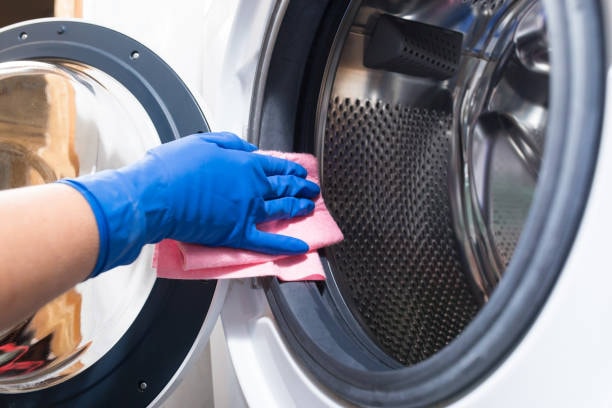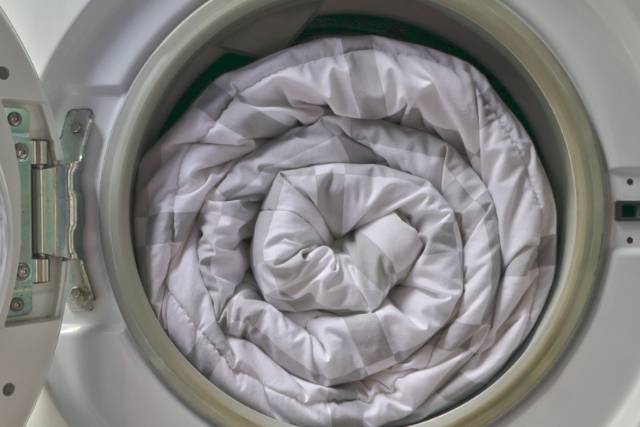Top 10 Most Common Washer Problems and How to Fix Them

When your washing machine breaks down, it instantly disrupts your daily routine and can leave piles of laundry waiting. As essential appliances in our homes, washers perform countless cycles throughout their lifespan, making them susceptible to various issues over time. At Toronto Refrigeration, we’ve seen and repaired virtually every washing machine problem imaginable. From simple maintenance fixes you can handle yourself to complex repairs requiring professional technicians, understanding these common washer problems can save you time, money, and frustration. This comprehensive guide will walk you through the top 10 most common washer problems, providing practical step guides for DIY solutions and helping you recognize when it’s time to call for professional repairs.
1. Washer Won’t Fill with Water
Understanding Water Supply Issues
One of the most common washing machine problems occurs when your washer won’t fill properly. This issue often stems from problems with the water inlet valve or water supply.
Possible Causes
Water Inlet Valve Failure
The water inlet valves control the flow of water into your machine. When faulty, they may not open properly or at all.
Clogged Water Valve Assembly
Over time, mineral deposits can build up in the valve assembly, restricting the flow of water into your washer.
Water Hoses Problems
Kinked, clogged, or disconnected water hoses can prevent proper water supply to your washing machine.
DIY Solutions
Before calling for repairs, check that both hot water and cold water supply valves behind your washer are fully open. Inspect water hoses for kinks or blockages, and examine the inlet valve screens for debris. Cleaning these screens with a small brush can often resolve minor blockages.
2. Washer Leaking Water
Common Causes of Water Leaks
Water leaks are disruptive and can cause significant damage if not addressed promptly. Identifying the source is the first step toward a solution.
Leak Locations and Causes
Loose Connections
Loose hoses and connections are often the simplest explanation for water leaks. Check all hose connections at the back of your washer.
Door or Lid Seal Issues
For front-load washers, a damaged boot seal can lead to significant leaking. On top-load washers, lid seal problems can cause similar issues.
Drain Hoses Problems
Cracked, loose, or improperly installed drain hoses may leak during drain cycles.
Repair Approaches
Tighten any loose connections and replace worn rubber washers if needed. For door seal issues, clean the seal with a cup of vinegar and water solution to remove mold and mildew that might be preventing a proper seal. More serious leaks from internal components typically require a repair professional.
3. Washer Won’t Drain Properly
Drainage System Overview
A washer that won’t drain properly leaves you with soaking wet laundry at the end of a cycle—a frustrating experience that interrupts your laundry routine.
Common Causes
Clogged Drain Pump Filter
The drain pump filter catches lint, coins, and other debris, becoming clogged over time. A dirty drain pump filter is among the most common washing machine repairs.
Drain Pump Failure
When drain pumps malfunction, they cannot effectively remove water from the washer drum.
Drain Hose Height or Blockage
If your drain hose is positioned incorrectly or has an internal blockage, proper drainage becomes impossible.

Troubleshooting Steps
First, locate and clean your drain pump filter (check your manual for access instructions). For front-load washers, this is typically behind a small access panel at the front bottom of the machine. Clear any blockages in the drain hose, and ensure it’s properly positioned according to manufacturer specifications—typically not more than 8 inches into the outlet pipe or drain.
4. Washer Making Loud Noises
Identifying Different Washer Noises
Excessive noise during operation often signals a developing problem. Different sounds can help diagnose specific issues with your washing machine.
Types of Washer Noises
Grinding or Buzzing
These sounds often indicate problems with the washer’s motor or drive components.
Banging During Spin Cycle
Banging typically suggests an unbalanced load or worn suspension system.
Squealing Noises
High-pitched squealing may signal issues with the drive belt or motor bearings.
Solutions Based on Noise Type
For unbalanced loads, redistributing laundry evenly can often resolve banging issues. If your washer is making loud noises even with a balanced load, leveling the machine using adjustable leveling legs may help. Persistent grinding, squealing, or buzzing usually requires professional attention as these indicate issues with internal components like drive motors or bearings.
5. Washer Won’t Complete a Wash Cycle
Cycle Interruptions and Causes
When your washer stops mid-cycle, it can be particularly frustrating, especially if you’ve waited hours only to find the complete wash cycle hasn’t finished.
Potential Issues
Control Board Problems
The electronic control board manages all washer functions. Malfunctions can interrupt cycles.
Bad Water Level Pressure Switch
This component monitors water levels. When faulty, it may cause the washer to stop mid-cycle.
Power Supply Issues
Power fluctuations or power failure can interrupt the washing cycle.
Diagnostic Approaches
Check your washer’s control panel for error codes and consult your manual for specific meanings. Power cycling the unit (unplugging for 1 minute) can reset the control board in many cases. For recurring issues, the electronic control or pressure switch may need replacement by a qualified technician.
6. Washer Overflowing
Water Level Regulation
An overflowing washer indicates problems with the mechanisms that control water levels in the machine.

Common Causes
Water Level Pressure Switch Malfunction
A bad water level pressure switch fails to signal when the washer has enough water.
Inlet Valve Not Closing
When water inlet valves don’t close properly, water continues flowing even when not needed.
Control Panel Issues
Faulty control panel problems can send incorrect signals to the inlet valves.
Emergency and Long-term Solutions
For immediate response, know how to turn off your washer’s water supply. For a long-term fix, testing or replacing the water level pressure switch is often necessary. This typically requires a repair technician, with median repair costs ranging from $150-250 depending on the type of washer.
7. Washer Not Spinning or Agitating
Understanding the Spin Function
When your washer won’t spin or agitate, it leaves clothes waterlogged and unwashed. This issue affects both top-load washers and front-load washers.
Possible Causes
Faulty Lid Switch
Modern washers have a safety feature that prevents spinning if the lid or door isn’t properly closed.
Drive Belt Problems
Worn or broken drive belts can’t transfer power from the motor to the drum.
Motor Coupler Failure
The motor coupler connects the motor to the transmission in many washing machines.
Troubleshooting Process
First, check if the lid switch is working correctly by listening for a click when closing the lid. Ensure loads aren’t excessively large, as overloading can prevent proper spinning. For more technical issues with the motor or drive belt, consulting a repair expert is recommended, as these repairs involve accessing internal components of the washer.
8. Detergent Not Dispensing Properly
Dispenser System Issues
Modern washers feature sophisticated detergent dispensers that can malfunction in several ways.
Common Problems
Clogged Detergent Dispenser
Detergent buildup can block the detergent drawer or tray, preventing proper dispensing.
Water Supply Issues
Inadequate water pressure or temperature can affect how detergent is distributed.
Excessive Detergent Usage
Using too much detergent can overwhelm the dispenser system and leave residue.
Maintenance and Fixes
Regularly clean the detergent dispenser with warm tap water and a small brush. For persistent clogs, remove the detergent drawer (if removable) and soak in white vinegar to dissolve buildup. Ensure you’re using the correct type and amount of detergent for your specific model.
9. Washer Vibrating Excessively
Balancing and Stabilization Issues
Excessive vibration during operation can move the washer out of position and potentially damage the machine or surrounding area.
Causes of Vibration
Uneven Washer Positioning
A washing machine that isn’t level will vibrate more during operation, especially at higher spin speeds.
Unbalanced Load
Unevenly distributed laundry loads create imbalance during the spin cycle.
Damaged Suspension System
Worn suspension components fail to properly dampen vibration during operation.
Stabilization Methods
Use a level to check and adjust the leveling legs on your washer. For front-loaders, consider anti-vibration pads. When washing bulky items like comforters, balance them with smaller items for more even weight distribution. Persistent vibration despite these measures may indicate suspension system problems requiring professional attention.
10. Washer Displaying Error Codes
Understanding Diagnostic Codes
Modern washers use error codes to communicate specific problems. Understanding these codes can save diagnostic time.
Common Error Codes
LG Washer LE Error
In LG models, this indicates a motor issue.
Samsung Washer DC Error
On Samsung machines, this typically signals an unbalanced load.
Inlet/Drain Error Codes
Many brands use specific codes for water inlet or drainage issues.
Response to Error Codes
Always check your user manual to interpret error codes specific to your model. Some codes, like those for unbalanced loads, have simple fixes you can perform yourself. Others, particularly those related to electrical components or the control board, typically require professional assistance.
Why Choose Toronto Refrigeration
Expert Technicians
Our team at Toronto Refrigeration specializes in all types of washers, from traditional top-load models to the latest high-efficiency front-load washing machines. Our repair technicians receive ongoing training on new models and technologies.
Comprehensive Service
We provide complete diagnostic and repair services with transparent pricing. Before beginning work, we provide a clear cost range and explanation of the issue severity.
Preventive Maintenance
Beyond just fixing immediate problems, our technicians can perform preventive maintenance to extend your washer’s lifespan, potentially saving you from more costly repairs down the road.

Rapid Response
We understand that a broken washer disrupts your household. Our prompt repair services can often be scheduled within 24-48 hours, minimizing disruption to your daily routine.
Guaranteed Work
All our washing machine repairs come with a warranty on both parts and labor, ensuring your peace of mind after service completion.
Competitive Pricing
Our service charge and repair costs remain competitive within the Greater Toronto Area, with no hidden fees. From a cost perspective, our transparent pricing makes us the destination for tech repair needs throughout Toronto.
Conclusion
From water leaks and drainage issues to strange noises and error codes, washer problems can range from minor inconveniences to major disruptions in your household routine. By understanding these common issues and their potential solutions, you can often resolve simpler problems yourself or make informed decisions about when to call for professional assistance. Remember that regular maintenance—cleaning filters, checking connections, and avoiding overloading—can prevent many common problems before they start. For more complex issues involving electrical components or major mechanical failures, Toronto Refrigeration’s expert technicians are just a phone call away, ready to restore your essential appliance to perfect working order with minimal downtime.